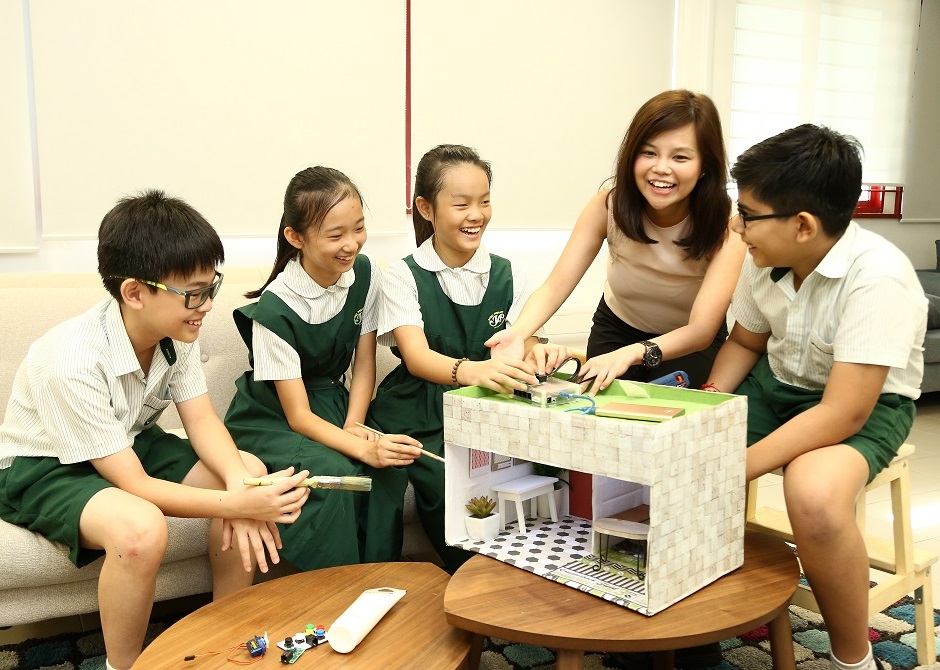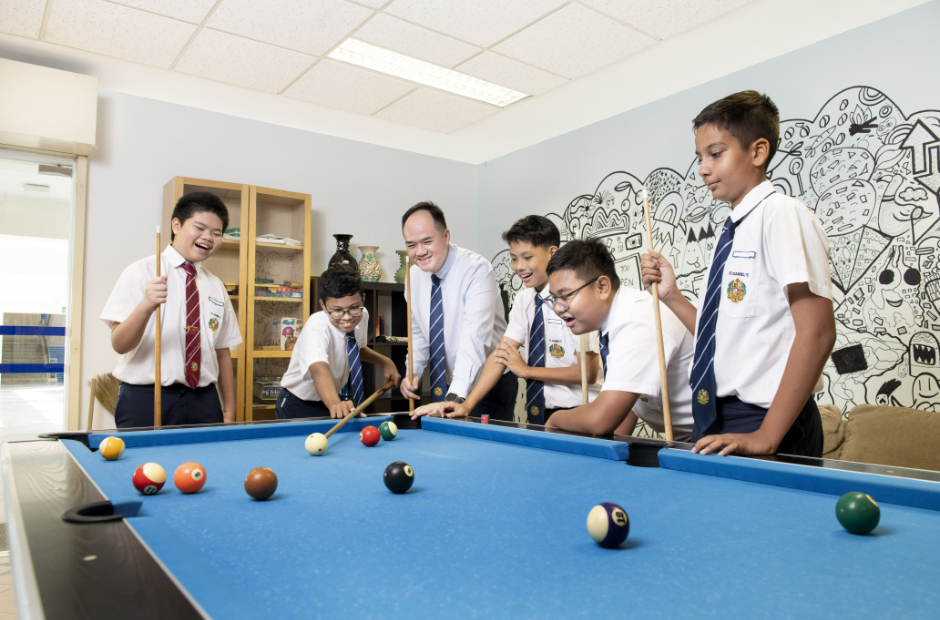Tan Si Hua, Juying Primary School, Outstanding Youth in Education Award 2018 Recipient
Inspired teachers, inspired learners
I chanced upon a note while marking one afternoon. Sandwiched between stacks of Mathematics activity books, it read, “Thank you for being my teacher! When you give us interesting lessons, I can feel that you care for us because you do not want us to die of boredom. Love, Abby.”
This candid and unexpected encouragement from my 8-year-old student tugged at my heartstrings. I was reminded of how my teachers had fuelled my interest in learning when I was in school.
I am dyslexic. I spent a large part of my childhood learning to read and spell. I struggled in school and had a slow start. I was fortunate to have teachers who were willing to spend extra time with me, adapting their teaching strategies to meet my learning needs.
To help me read, they taught me how to decode and comprehend words – from guiding me with small, simple words, to breaking bigger words into syllables. In time, my reading improved. One of my teachers even made me her “Little Helper” to improve my vocabulary. I learnt words as she guided me to create learning resources such as posters and word cards for the class.
Twenty years later, I am a teacher myself. I have the same privilege as my teachers to inspire the love for learning and bring out the best in all my students. Remembering how my teachers helped me, I am determined to customise my teaching to meet my students’ needs.
Engaging minds in the Google era
Most children I meet now are exposed to technology from a very young age. Gone are the days when they would sit quietly and pay attention throughout a lesson.
Like Abby, today’s learners yearn to have a greater level of engagement, while they seek relevance and meaning in their learning. They want to know why they are learning a particular subject and be given the space to explore.
To create a more relevant learning environment, I decided to use technology in my lessons. After extensive research, my colleagues and I decided on two new approaches to engage our students.
Flipped Team-Based Learning
In Flipped Team-Based Learning, students learn from application of knowledge. The teachers curate and design videos, simulations, games and quizzes, and get students to try them at their own pace before attending class.
For example, in teaching bar graphs, we did not merely show students how to read and interpret the data. Instead, students took ownership of their own learning by researching on the diverse types of graphs and their uses.
Following their research, our students played the role of Food Detectives to investigate the main cause of food wastage in school. In groups, they crafted interview questions and used iPads to interview their peers during recess.
Armed with the trend data on food wastage, they then returned to class to decide on the most appropriate graphs to present their findings.
The teachers would help them to extend their learning by sharing on the food wastage situation at the national level. Beyond Mathematics, students also discovered which countries in the world were facing starvation, and in turn they learned to appreciate the abundance our nation enjoys.
Phenomenon-Based Learning
To help students relate what they have learnt in the curriculum to the real world, the teachers also adopted Phenomenon-Based Learning. Students would engage in activities that allow them to explore real-world phenomena, identify potential problems, imagine possibilities, make connections and generate innovative solutions.
For instance, a lesson on electricity would see students constructing miniature “smart homes” using recycled materials. Through these dollhouse-sized “smart homes”, students would explore how LED lights, motion sensors, timers and motors work in tandem to mimic the principles of energy conservation in energy-saving devices. They would even learn how to programme these devices using microcontrollers.
Seeing the sparkle in students’ eyes as they presented their “smart homes” to their classmates, as well as their pride when they took the fruits of their labour home to share with their parents, I felt an immense sense of satisfaction.
The journey to uncover this constantly changing world with my students is exhilarating. I ensure their experiences in the classroom are different every day, because I constantly adapt my teaching to suit my students’ needs, just as my teachers have done for me. Thankfully, my task is made easier with the help of technology.






